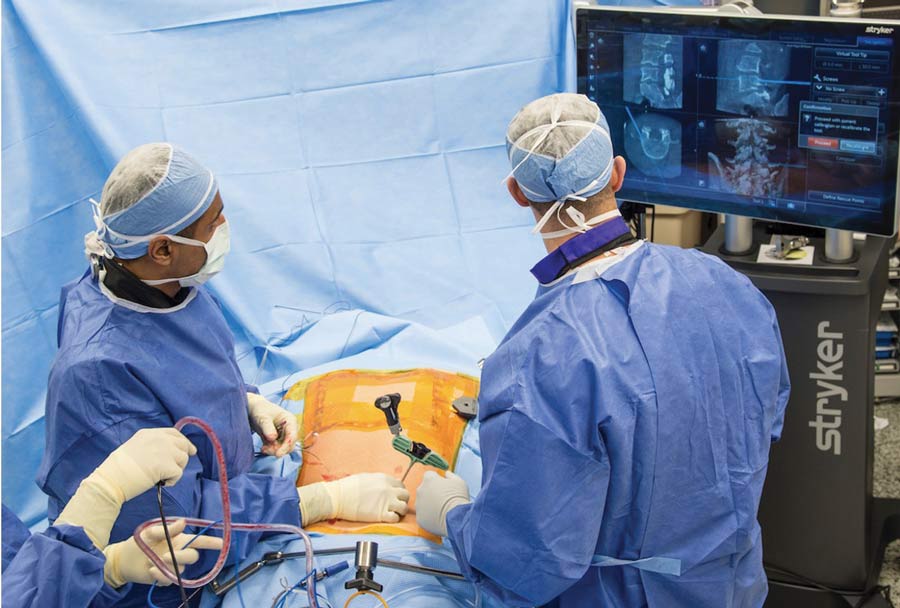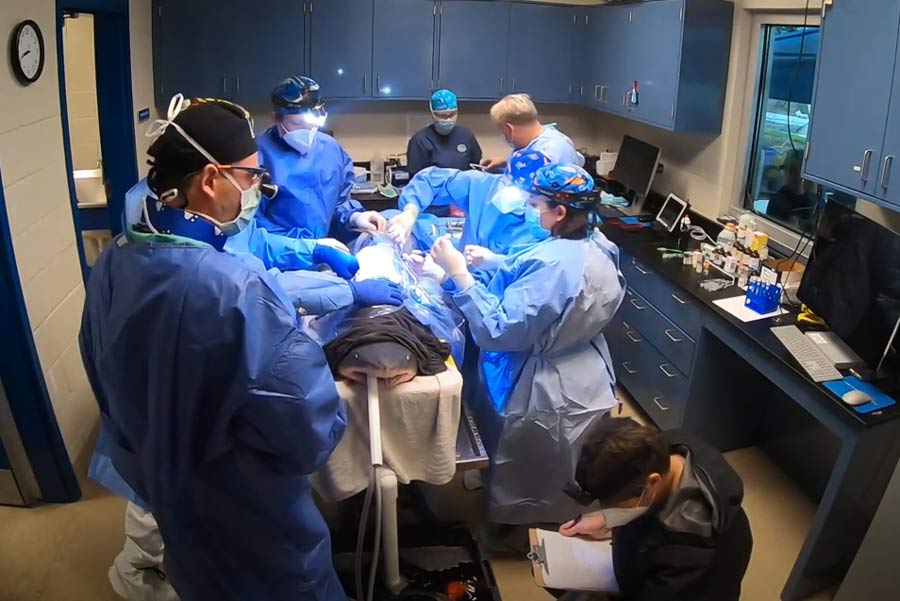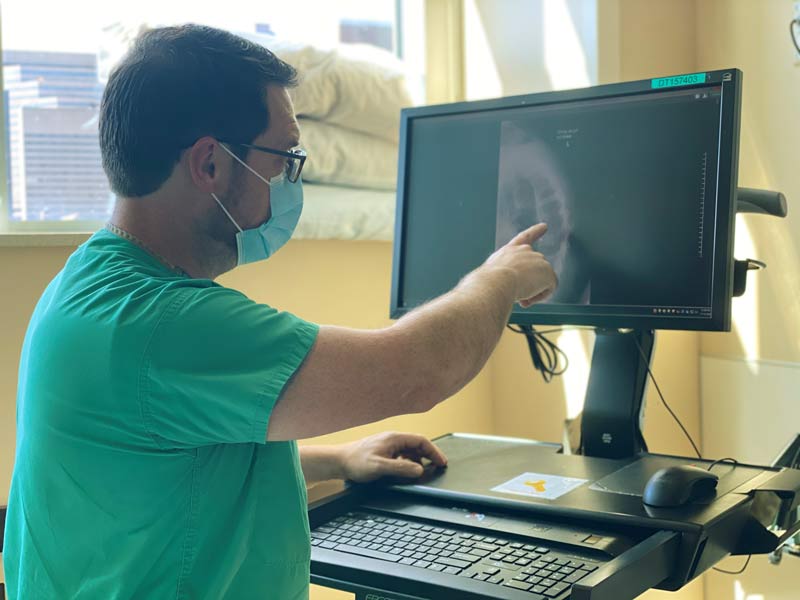They range from effective verbal communication to the latest navigation systems.
 Credit: Hospital for Special Surgery
Credit: Hospital for Special Surgery INCLUSIVE CULTURE When surgeons count vertebrae, OR staff should feel empowered to speak out if they see a possible error.
In the delicate world of spine surgery, a wrong-site error can be disastrous both for the patient and your facility. The causes are varied, including similar-looking vertebrae, patient obesity, anatomic abnormalities and visualization limitations. Sheeraz Qureshi, MD, MBA, the Patty and Jay Baker endowed chair in minimally invasive spine surgery at the Hospital for Special Surgery, and associate professor of orthopedic surgery at Weill Cornell Medical College in New York City, shares four essential tips that help surgeons more accurately identify the level of the spine that needs to be repaired or replaced:
- Make three counts. Because individual vertebrae can look identical, identifying the correct level of the spine to be operated on can be difficult. "The only way to know you're at the correct spot is to find an anatomical landmark that looks different from the rest of the spine, and count vertebrae until you reach the disc that needs treatment," says Dr. Qureshi. C-arms don't provide full-body images, so he places artificial markers to identify where to begin his count to the correct vertebrae. He performs three localized counts using X-rays to confirm the intended surgical site. First, he does a pre-incision count after the patient is intubated, anesthetized and positioned; he places a needle through the skin that overlays the area he wants to operate on and confirms it's at the vertebrae that needs repair. Second, he performs a post-incision count by placing a surgical tool on the bone to make sure it's the correct one; his count ends when he gets to the disc with the tool on top. A third count for confirmation is taken after the surgery.
- Involve the whole OR team. Dr. Qureshi advises to conduct time outs pre-incision, post-exposure and post-surgery. "Every member of the surgical team should be engaged in ensuring the correct site is identified," he says. "They should stop what they're doing when it's announced a localization attempt is about to start and focus all of their attention on the patient, the surgeon and the intraoperative images." He counts out loud to the targeted vertebrae level, and if someone doesn't agree, he encourages staff to question him and ask for another image or count if necessary. Dr. Qureshi recommends all OR staff receive advanced training about counts, localizations and spinal anatomy. "All it takes is a culture change," he says. "Anybody can make a mistake, but it's hard to imagine multiple members of the surgical team making the exact same counting error if there's a culture in place that empowers everyone in the OR to speak up."
- Get the best image. "The biggest factor that contributes to surgeons counting to the wrong vertebrae is the poor quality of intraoperative images," says Dr. Qureshi, with the thoracic spine especially difficult to visualize and access. "It's hard to be confident you're in the right spot, even during the perfect case," he says, noting that anatomy can vary significantly from patient to patient. "Surgeons can't change a person's body habitus or the technical quality of the C-arm they're using in the OR," he says. "They can, however, plan in advance of scheduled procedures to ensure they're working with the best possible image in the OR." Dr. Qureshi suggests surgeons request to use the best-performing C-arm in their facility, or place a localized marker before surgery at the bone they're going to treat when operating on a patient who is obese or has potentially troublesome pathology.
- Rely on navigation technology. "The superior image quality provided by surgical navigation technology can further reduce the likelihood of wrong-site errors occurring," says Dr. Qureshi. "The platforms are expensive and there's a learning curve to operating them proficiently, but the 3D views help to ensure your team is working on the right disc." He uses 3D navigation for challenging posterior cervical spine surgeries, particularly those performed at the cervical-thoracic junction.
.svg?sfvrsn=be606e78_3)



.svg?sfvrsn=56b2f850_5)